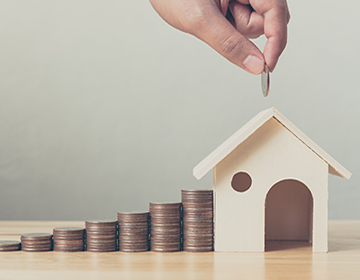Graeme Murray Blog
07 July 2014

The Energy Act 2011 and its Implications for landlords and property investors
Are you aware of the changes in legislation affecting the letting of residential properties? Did you know that from 2018, it will be illegal to let properties which are deemed energy inefficient?
If so, are you planning ahead to ensure that any necessary work is done during a break between tenancies?
If you’re not yet fully up to speed, the good news is that there are various Government initiatives to help from both a practical and financial point of view, but it’s worth starting to think about it now.
From April 2018, under the Energy Act 2011, it will be illegal to rent out property where a minimum energy efficiency standard has not been achieved. This is thought likely to be fixed at an Energy Performance Certificate (EPC) rating of E, although it is yet to be confirmed. Therefore any F and G rated assets that you own will need substantial improvements or face ‘obsolescence’ – that is, they will not only be illegal to let, but extremely difficult to sell.
The good news is that we’re expecting secondary legislation which will state that the improvements required must not entail upfront costs to the landlord. This is expected to mean that only improvements that can be funded through the Green Deal and any available ECO funding, would be required.
The Green Deal was introduced in January 2013 to enable the cost of energy efficiency improvements such as loft and wall insulation, to be paid through a loan attached to the property’s energy bills and repaid over a period of up to 25 years. Under the terms of the Green Deal, an accredited Green Deal assessor must visit the property and draw up a plan showing the possible energy efficient improvements, and the cost and potential energy savings. Improvements must then be carried out by accredited Green Deal providers. Liability for paying the supplement remains with the property, so if you sell the property, the next owner is liable for paying the supplement (unless the right to repay the loan early is exercised).
Green Deal funding is only available if the anticipated energy savings throughout the lifetime of the improvement (up to 25 years) exceed the initial cost of making the improvement, but this can be discussed with your Green Deal assessor.
There’s no doubt that the Energy Act poses a significant change to the property investment market, but with the right advice and some careful planning, landlords have the opportunity to create a much more sustainable product in a way that is financially manageable.
Below is a list of procedures landlords can carry out to raise their energy rating:
• Boiler upgrades
• Change light fittings to LED or CFL technology
• Introduce more sophisticated controls on heating, lighting, air conditioning
• Upgrade insulation to roof and cavity walls.
• Retrofit external insulation / cladding
• Replace single glazed windows or apply secondary glazing
• Install photovoltaic or solar thermal panels
• Install air sourced heat pumps
• Address any draughts
• Install a weather compensation system (boilers are not active when external temperatures are above 15ºC)
• Install motion sensors and adjusting timings on existing sensors so that lights switch off promptly
• Reduce thermostat deadbands to within + 2ºC or - 2ºC to prevent heating and cooling working simultaneously
• Carry out 24-hour lighting audits where energy efficient light bulbs have been installed
• Install software that monitors computer use and can switches computers off when not in use
• Metering and energy-management – gain data on where savings can be achieved and evaluate the effectiveness of initiatives
* Graeme Murray is Head of Sustainable Engineering at CBRE



.png)

.jpg)







Comments